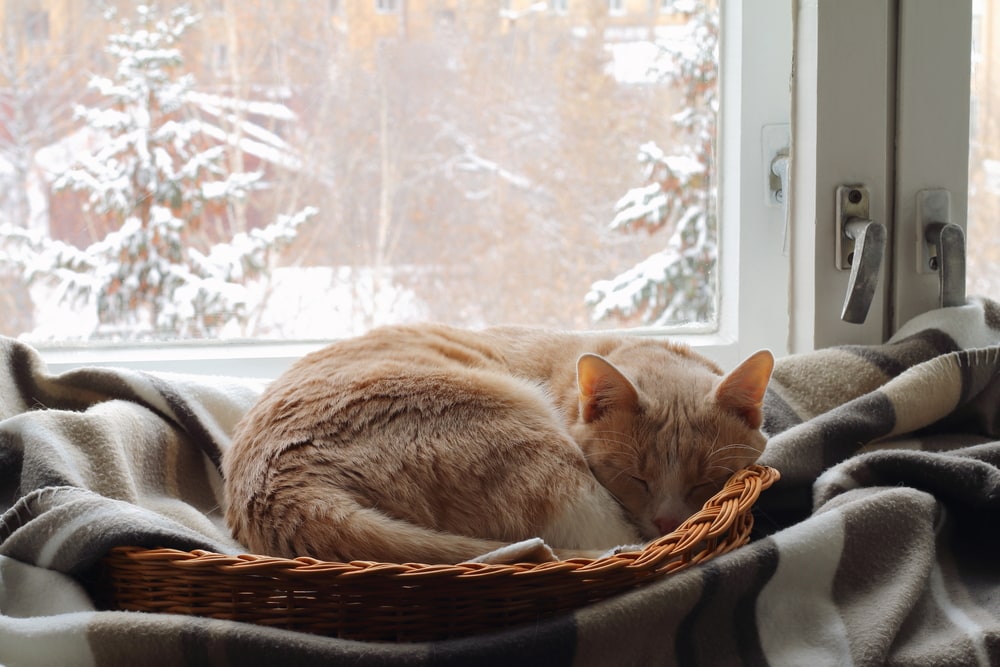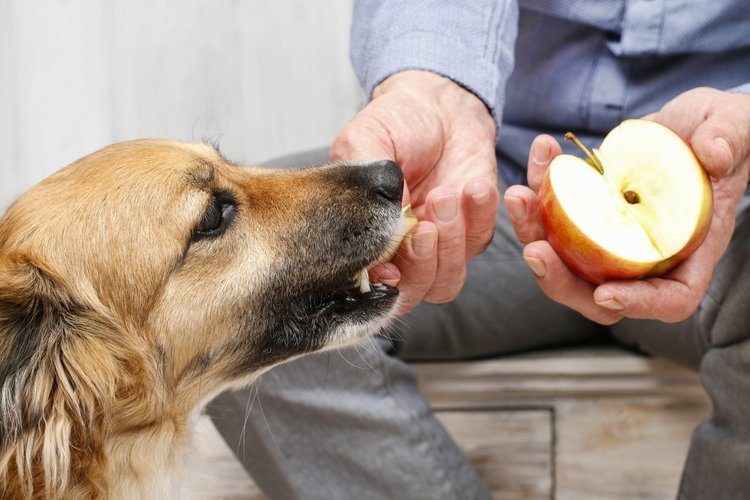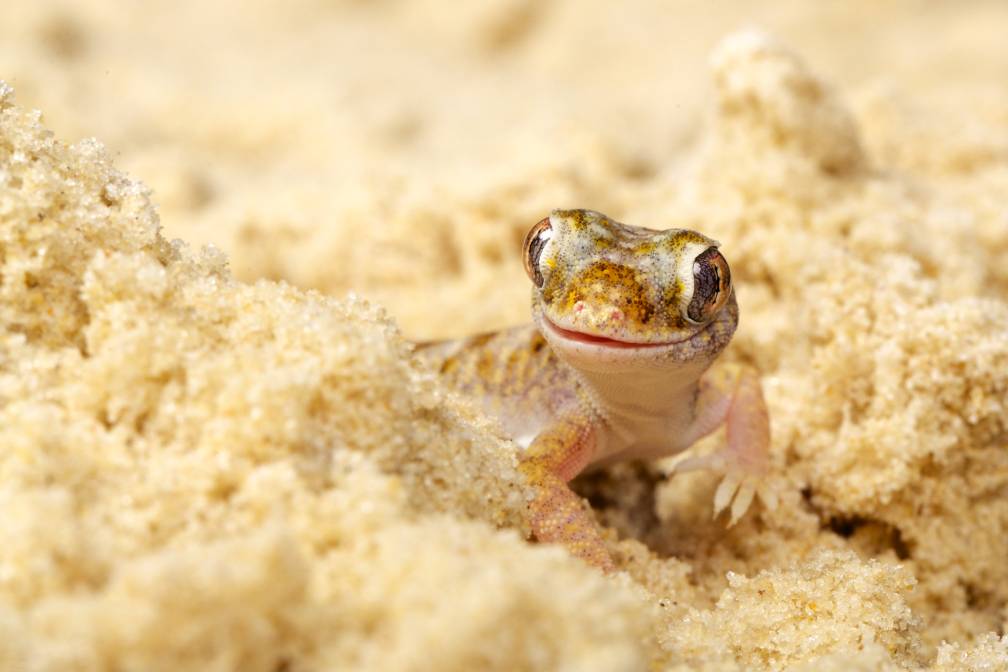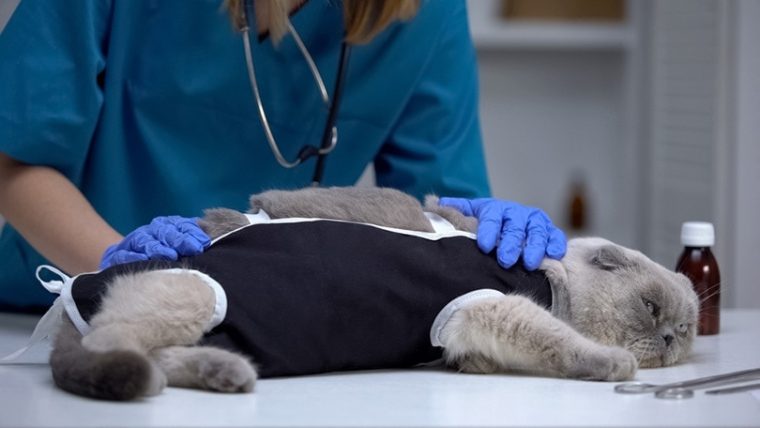
The spaying surgery is a short-term and slightly painful procedure, but it has many benefits for your cat. Being a complex procedure, it requires general anesthesia.
From the end of the procedure to the complete recovery of your cat, there are several steps that must be followed to help your pet get over this event.
Post-surgical recovery lasts 3 weeks on average. Twenty-four hours of close observation are usually required after your cat’s spaying procedure. After this critical time, cats can resume many of their daily habits and practices.
Always take into account the advice of your veterinarian, and follow it closely for your cat to recover in the shortest possible time.
What Is Spaying?
Sterilization represents the surgical removal of the reproductive organs. For female pets, it is called spaying and for males, neutering.
For female cats, spaying involves the removal of the ovaries and uterus through surgical intervention in the abdominal area. This is called an ovariohysterectomy.

Benefits of Spaying
Spaying your cat before her first menstrual cycle (heat) considerably reduces the risk of mammary cancer. By removing the ovaries, the level of hormones that facilitate the development of cancerous tumors is reduced.
Other benefits include:
How Long Will My Cat Take to Recover From Spaying?
Most cats that undergo the spaying procedure will begin to feel better within 24–48 hours after the surgery. Complete recovery usually takes 10–14 days. That can feel like an eternity, especially after your cat has been spayed. But this period is necessary for your cat to recover completely and without complications. During this time, the surgical incisions will heal, and your cat will no longer feel any discomfort.
If your cat is not completely healed and you let her go outside or play intensively, it could lead to a complication that may cause you to restrict her for even longer. Too much activity and movement at the site of the surgical intervention could lead to the unraveling of the sutures. The complete opening of the stitches could cause the intestines and other organs to exit the abdomen. This is an emergency and can lead to your cat’s death if you don’t act immediately. Therefore, you must follow the post-surgical instructions of the veterinarian.
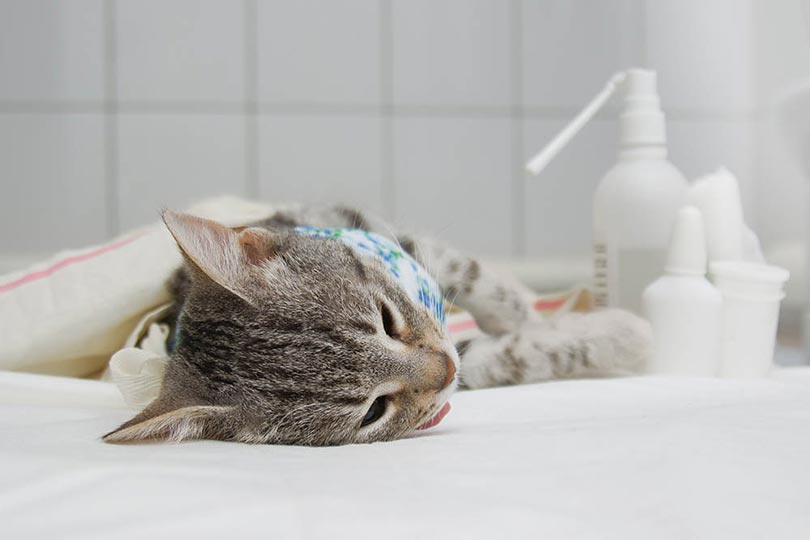
Tips to Follow in the First 24 Hours After the Spaying Procedure
Keep in mind that your cat may behave differently in the first 24 hours after the surgery. She could present the following clinical signs:
Still being under the effects of anesthesia, your cat runs the risk of hitting herself and becoming stressed due to loud noises and bright lights. Usually, full recovery from general anesthesia takes between 18 and 24 hours, but most pets recover after the anesthetic leaves the system.
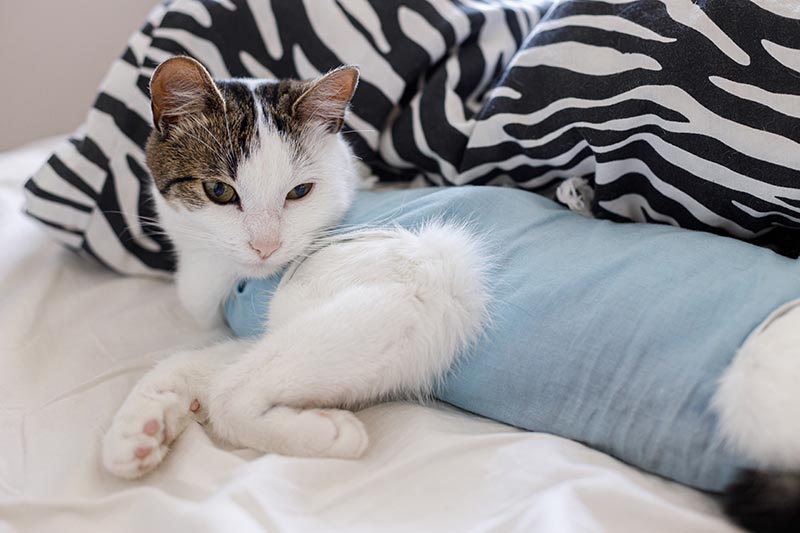
Here are a few tips that will help your cat have a speedy recovery:
Be patient and empathetic with your cat in the first 24 hours after the spaying procedure! She may be more anxious post-surgery or more apathetic and even appear sad. As soon as your cat can move and eat, she will feel much better.
Monitor your cat’s behavior. If 48 hours have passed and your cat still seems lethargic and does not want to drink or eat, contact the veterinarian because she may have developed an infection or other complication.
Also, if your cat does not urinate or defecate in the first 48 hours after the procedure, contact the vet immediately.
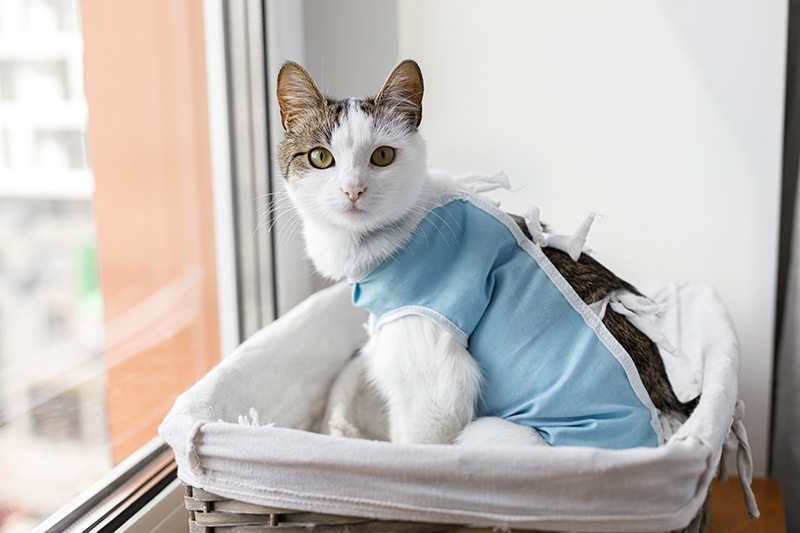
Tips to Follow in the Next 1–14 Days After Surgery
Here’s what you can do to make sure you minimize the complications that could arise following the spaying procedure:
 Conclusion
Conclusion
Spaying is a relatively simple procedure, and full recovery can take up to 14 days. As with any surgical intervention, complications can occur. These are usually infections, represented by redness, swelling, or pus at the site of the incision. The incision site can also reopen if your cat has prolonged or high-impact physical activity or grooms the area excessively. This is considered a medical emergency, and you should take your cat to the vet as soon as possible. If everything goes well after the surgery and no complications arise, your cat can resume her daily activities after 14 days.
Featured Image Credit: Motortion Films, Shutterstock




